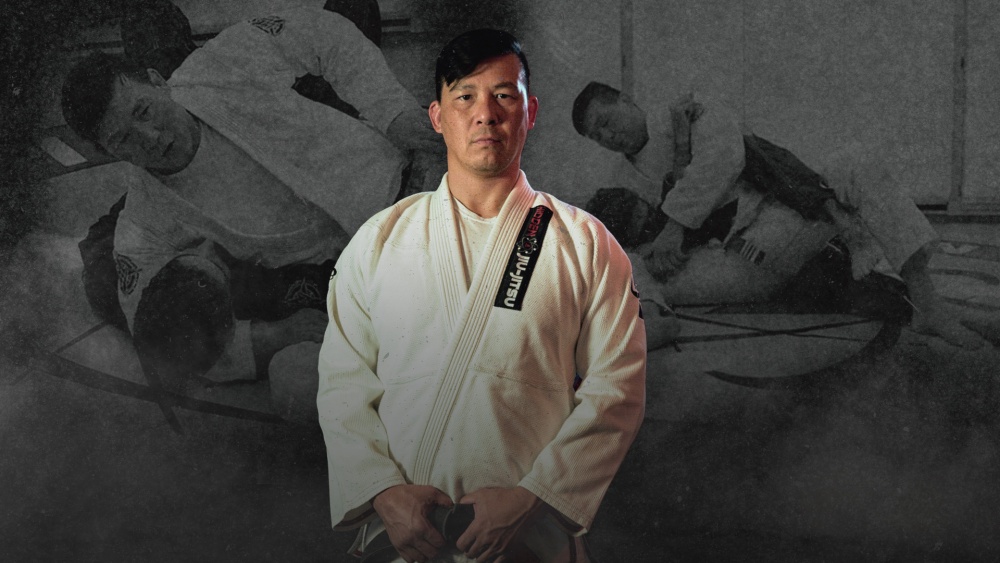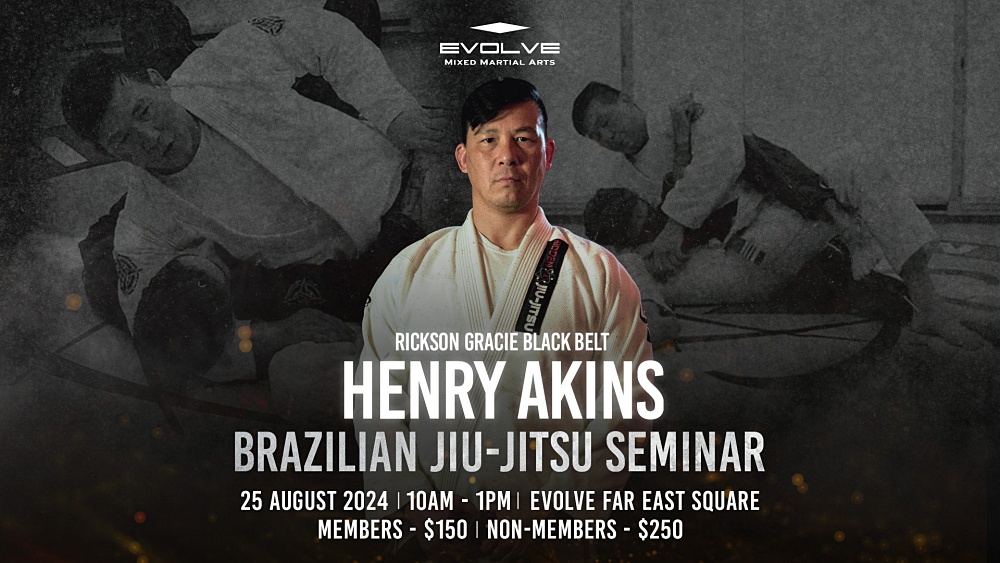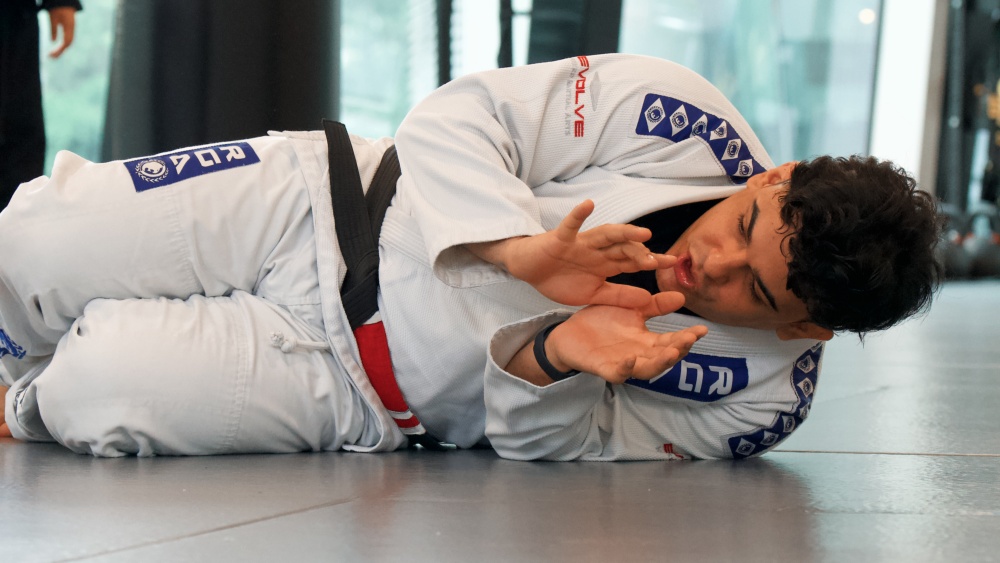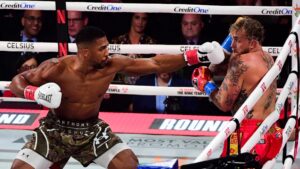As the saying goes, nothing beats the basics. With a remarkable understanding of the fundamentals, a practitioner who has mastered the basics can dive deeper and see the things that are typically invisible to most. Among the many stars in Brazilian Jiu-Jitsu today, Henry Akins stands out as an icon and a representative of how the old-school approach can transcend generations. Today, we will look at Henry Akins and his journey into the art of BJJ.
Who Is Henry Akins?
Henry Akins is a legendary BJJ black belt based in the United States. He is widely known for his exemplary and nuanced application of Brazilian Jiu-Jitsu, mainly focusing on the fundamental aspects of the art. Earning a black belt is already an extraordinary feat, as a significantly low percentage of the population will ever achieve one. However, receiving one from the living legend Rickson Gracie himself and being the fastest to do so sets Henry apart even more. He received his black belt in 2004, becoming the third American to do so, and currently holds a 3rd-degree black belt.
The Jiu-Jitsu community highly regards Henry for his ability to teach and coach the fundamentals of grappling in a uniquely simple yet precise way, having trained hundreds of black belts worldwide. What makes Henry exceptional is that he focuses more on concepts and connections rather than solely on techniques, having a unique way of explaining that allows these concepts to effortlessly become part of and be applied to one’s game. After his promotion, Henry became the head instructor at Rickson Gracie’s academy due to Rickson’s return to Rio de Janeiro. He also served as Kron Gracie’s instructor during his days as a colored belt.
Henry honorably ran Rickson’s school with utmost respect, a role bestowed upon him until 2008, when a severe back injury forced him to step down as the head coach. Two years after recovering from his injury, Henry returned as the head coach of Dynamix MMA in Santa Monica, California, in partnership with his student and friend, Antoni Hardonk, a former UFC and K-1 fighter. Throughout his teaching career, he has adopted Rickson’s core principles of Jiu-Jitsu and imparted them to thousands of BJJ students worldwide.
Hidden Jiu-Jitsu
“Invisible Jiu-Jitsu” is an expression Rickson uses to describe his Jiu-Jitsu. Henry uses the term “Hidden Jiu-Jitsu” because many of Rickson’s adjustments are difficult to observe visually. These subtle adjustments, such as weight distribution, are hard for the untrained eye (and even active grapplers) to see. To a seasoned practitioner, however, the adjustments and these small, subtle details, although seemingly hidden, make all the difference in techniques, making high-level Jiu-Jitsu appear effortless.
Concepts like leverage, weight, shifting in momentum, transitions, and knowing how to attack the opponent efficiently make all the difference at higher levels of Jiu-Jitsu. These elements often aren’t explained and taught in most BJJ classes, which Henry observes as a lack of understanding. The kinesthetic feel is sometimes the missing information that practitioners need to feel. Since English is not Rickson’s first language, being able to make his partners “feel” the Jiu-Jitsu helps to cover the language barrier of the struggle of articulating his thoughts and what he wants the practitioners to do.
Training under Henry Akins is perhaps one of the best ways to understand the subtle side of the art. His ability to break down complicated concepts into simple movements is a gift that few possess. At the core of it all, Brazilian Jiu-Jitsu is the science of understanding how one can utilize physics to overcome a resisting opponent.
Sport vs Street Jiu-Jitsu
Henry believes in the importance of training Jiu-Jitsu with strikes. To him, this is a significant ingredient to Jiu-Jitsu because BJJ is a form of martial art, and the whole purpose of it is to be able to defend yourself. Very rarely will you get into a street fight with someone who also does Jiu-Jitsu and is willing to engage in the art alone. Even if they do Jiu-Jitsu, the assailant will throw punches, elbows, and knees. Growing up in a Vale Tudo environment and being one of Rickson’s training partners helped Henry see the effectiveness of training Jiu-Jitsu with strikes, as he believes it is critical to understand how to deal with them. He believes that not training with strikes means a practitioner is not training in Jiu-Jitsu but rather submission grappling, a sport and a different art.
Jiu-Jitsu was originally trained and was meant to be trained with punches, elbows, knees, and kicks, heavily emphasizing self-defense and full combat. Henry suggests training Jiu-Jitsu with striking at least once a week to keep your mind wary of the potential of strikes in a fight situation. The intention of adding strikes is to make your training partners react and force them to be more aware that being in an inferior position can cause them damage, forcing them to make an escape. The purpose is also to teach practitioners how to use strikes in the context of training.
An example practitioners make when they get mounted is sticking their elbows to their bodies, which is an unrealistic way of training the art as this puts them at risk of getting punched in a street scenario. The addition of strikes will make practitioners do things they usually would not do, such as giving their back. Therefore, Henry believes that training Jiu-Jitsu with strikes benefits you and your training partners as it makes you more aware. Not training in this manner won’t make you conscious of using this grappling style, which can be detrimental in the long run. As the saying goes, it is better to have the skill and not need it than need the skill and not have it.
Level Up Your BJJ Game With The Henry Akin’s BJJ Seminar!
Henry Akins is a genius in the most realistic form of Brazilian Jiu-Jitsu. With his deep knowledge of using BJJ in self-defense situations, he is undoubtedly one of the best coaches in the world today. His unique focus on “hidden” techniques and principles, inherited from Rickson Gracie, has positioned him as a prominent figure in Jiu-Jitsu, making the art accessible and deeply strategic for practitioners everywhere.
We would like to invite you to learn from the master himself. Evolve MMA will host a BJJ seminar with Professor Henry Akins on August 25, 2024! You’ll gain invaluable insights from his exceptional thought process and leadership as a high-level instructor. Don’t miss this opportunity—secure your spot here now!


















